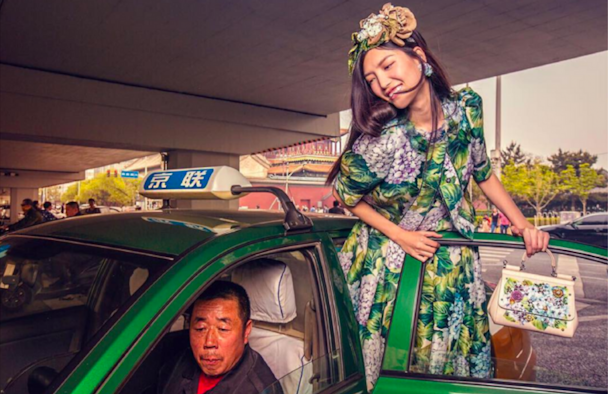Why Western brands need to abandon outdated ideas and embrace modern China
Western brands risk alienating China’s young, modern consumers with campaigns that miss the mark culturally and play to Western clichés of the country, according to marketing experts.

Dolce & Gabbana were recently accused of launching a culturally tone-deaf campaign in China
Fashion house Dolce & Gabbana recently became the latest international brand to offend China’s vocal netizens with a social media campaign, which was deemed “offensive” and “tone-deaf”.
The ironically named D&G Loves China campaign aimed to promote the brand’s first fashion show in Beijing, by featuring Dolce & Gabbana-clad models posing among locals and tourists in Beijing tourist spots, such as historic hutongs, Tiananmen Square and The Great Wall.
The campaign was met with backlash from Chinese consumers who accused Dolce & Gabbana of stereotyping China and presenting a backwards view of old “undeveloped” areas rather than images of the new modern China.
How did they get it so wrong?
Louis Houdart, founder and global director of branding and design agency Creative Capital, said Dolce & Gabbana’s campaign presented a romanticised Western view of China, which was out of step with how China’s young millennials see themselves.
“China is a diverse and sophisticated market but too often brands approach the market with their ideas about dragons and hutongs and they play to clichés.
“Chinese millennials are born in incredible modern cities with infrastructures that are often far better than in the West. If you compare the metro systems in Shanghai or Shenzhen with London, New York or Paris, China’s is not only more modern, it is also cleaner, faster and on time. That’s why Chinese milleninals find it so frustrating to see China painted only with a prism of the past.”
“China obviously has thousands of years of history, but China is not only an old place made of gold, red and jade, or old hutong. It is also a vibrant contemporary place and taking a picture of an old Chinese gentleman on a bicycle is an easy cliché,” said Houdart.
Mark Tanner, managing director of marketing and research agency China Skinny agrees: “To me it smacks of a bunch of white-faced 'creatives' touring in China for a few days and recreating what was interesting to them. It's common for Western brands approaching China with a Western mindset, rather than from an often different Chinese consumer perspective.”
While Dolce & Gabbana have silently removed the images from WeChat and Weibo, they remain on the brand’s Instagram profile. The company has not spoken publicly about the images, or returned The Drum’s phone calls.
However, experts say if the brand wishes to minimise the damage they will need to launch new targeted communications for the Chinese market.
“In the short term there is likely to be a small dip in sales, but if they can follow up with a solid proposition and more in-touch marketing, sales are unlikely to fall off a cliff,” said Tanner.
Why brands miss the mark in China
Dolce & Gabbana is not the first foreign brand to fall foul of Chinese consumers with marketing initiatives that fail to connect with China’s big-spending millennials.
Victoria’s Secret was branded “racist” after dressing runway models in dragon-themed outfits in a bid to win over Chinese consumers, and Burberry was seen to have cheapened its brand by adding a Chinese character to its iconic scarves, which many consumers said made the products look fake or counterfeit.
“Chinese consumers are hyper-sensitive about anything that puts China and Chinese people in a bad light,” said Tanner.
“With social media engagement in China amongst the highest in the world - particularly with the big-spending millennials - these things tend to spread far and wide, and very quickly.
“The main motivation for Chinese consumers buying D&G-type luxury brands, is to project status and success to others; but when those others see that brand as being completely out of touch with Chinese consumers, it will clearly erode brand preference,” said Tanner.
The timing of Dolce & Gabbana’s faux-pas could not have come at a worse time. China’s luxury market is only just beginning to show signs of recovery after a tough 2016, which saw a decline in sales from Chinese consumers. Chinese consumers account for one-third of all global luxury spending and buy more products than any other country.
When you consider the size and importance of the China market to brands, it is hard to imagine how these initiatives find their way to market, however, Houdart said the issue is often caused by a brand’s desire to maintain its global messaging, while trying to appeal to the local market.
“Too often the headquarters has a really old image of China and they tend to rely on very traditional codes when they adapt a localised strategy,” said Houdart.
“Obviously, a brand needs to maintain a consistent message but you need to address that message in a more local way. Which is true for any market in the world. When it comes to luxury you need to be consistent but you also need to be creating something exclusive for each market.
“You need to ensure that your local campaign is consistent with the brand image but also relevant to local consumers,” said Houdart.
Investing in local insights
The desire to make a brand relevant to Chinese consumers can backfire spectacularly, as Airbnb recently learned.
The home sharing brand launched a major marketing effort in China, where it hopes to build awareness and steal share from Chinese rival Tujia. In a bid to appeal to Chinese consumers, Airbnb unveiled a new Chinese name, 爱彼迎 (Àibǐyíng) only to have the move immediately backfire.
At the China launch Airbnb CEO Brian Chesky explained the name’s meaning as “to welcome each other with love”, however, Chinese consumers took to social media to complain and ridicule the name which many said sounded “unpleasant” and “weird”.
Frank Ye, associate creative strategist at digital marketing agency Qumin, said Airbnb’s name was an example of brand’s not understanding China or its target audience.
“Airbnb, as a company, represents a new lifestyle. It is modern and young. However, the name they selected does not reflect this. The three characters they selected, when you put it together and say it out loud, it sounds old, traditional and not very tasteful as a brand.
“When it was still using its English name, Airbnb positioned itself as the pioneer of the sharing economy, a brand that was heralding a new era, but this name doesn’t capture that sense. There are certain Chinese characters that can relate more emotion, but these three characters don’t give you that feel.”
Ye said Airbnb and Dolce & Gabbana’s recent experience highlights the need for marketers to have a greater understanding of Chinese consumers and what makes them tick.
“The Dolce & Gabbana campaign really stirred up issues in China around how Chinese people view themselves today compared with how Westerners view young Chinese.
“It is very easy for Western brands to miss the mark and talk to Chinese audiences in an old rhetoric – and in the case of some brands in a seemingly patronising way. It’s useful for Western brands to not only monitor the discussion of their own brands but also to monitor the sentiment in China, particularly in the target market you are trying to reach. It’s important to see how they are responding to issues to get a sense of what is important to them,” said Ye.
However, monitoring consumer sentiment in China is a difficult task for foreign brands due to a lack of data and insights being translated and shared outside of the market.
Qumin CEO Arnold Ma believes part of the problem with these initiatives is that China’s closed ecosystem and language barrier presents major challenges for marketers.
“It’s a combination of things. There’s a lot of brands that still feel like they can push global ideals onto China. But also, there’s a lack of resources. All the Chinese tools and platforms live in their own bubble and there are not any Western tools that can capture sentiment or analysis out of Chinese data. We have been trying to build a data analysis tool that delivers English insights from Chinese data but it’s difficult. Not only do you have to understand and translate the meaning, there just isn’t the level of tools and resources for English marketers to understand China,” said Ma.
While marketing experts agree there is still work to be done, some believe it is getting better. Ma says Tencent has recently opened its WeChat platform with the launch of WeChat Index, a tool which enables users to search specific terms or brand names in order to gauge the number of mentions across the platform.
Marketers are also investing more in consumer insights from China to ensure they have a better understanding of the modern Chinese consumer.
“More foreign brands have been taking a much less 'imperialist' approach to China over the past few years and are investing in insights to understand how the Chinese consumer differs and what pushes their buttons, and better localisation of their propositions and campaigns as a result,” said Tanner.

